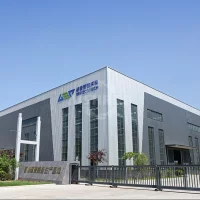Against the backdrop of mechanical recycling of tires becoming the mainstream choice, data shows that the recycling price of rubber powder fluctuates between $200 and $280. In addition to explicit benefits, governments in multiple countries also have different subsidy policies for the disposal of waste tires, bringing hidden benefits to investors. Rubber powder can be used to manufacture recycled rubber, modified asphalt, as well as in the fields of construction, civil engineering, and industry. Compared to coarse rubber powder, fine rubber powder has fewer restrictions on its application range, and its selling price and profit are also higher. So, how can we produce high-quality and high-purity rubber powder?

From a technical perspective, tires are not pure rubber, they are composed of layers of rubber, steel wire, and fibers. There are several difficulties in producing high-purity rubber powder using car tires:
Complexity of tire structure
- Car tires contain multiple layers of fibers (such as polyester, nylon, and synthetic silk) as the skeleton material.
- Fiber and rubber are deeply cross-linked through adhesive, with extremely strong physical bonding.
- Micro sized fiber fragments will be embedded into the rubber matrix.
Limitation of existing processes
- Airflow sorting: By utilizing density differences for separation, 80-90% of loose fibers can be removed, but fine fibers (<0.5mm) are prone to co floating with rubber;
- Vibration screening: Separation is carried out according to size, which can only remove incompletely dissociated fiber clusters and is ineffective for ultrafine fibers;
- Electrostatic sorting: By utilizing the difference in conductivity, effective separation can be achieved for some synthetic fibers (such as nylon). But the efficiency is unstable and cannot be effective for all types of fibers.
- Low temperature frozen tire grinding line: Tires are cooled to -80℃ using liquid nitrogen (LN2) or turbo explorers before small stage milling. For every ton of rubber powder produced, 0.35-1.5 tons of LN2 are required. Turbo-expander systems save 33% vs. LN2 but require 480+ kWh/ton. Compared to the normal temperature tire grinding production line, the investment in low-temperature tire grinding production line far exceeds the profit, and it is basically not adopted in business.
Solution and Suggestions
The most ideal and only reliable raw material for producing high-quality rubber powder with low impurity content (especially fiber) is waste all steel radial truck/bus tires (TBR). Be sure to strictly classify at the source to avoid mixing passenger car tires or diagonal tires containing fiber cords.
For investors in tire grinding lines, because the recycled tires come from different brands and the composition of different types of tires varies, the purity of the final product is also uncontrollable. If it is not possible to ensure the type and proportion of tires in the production materials, this problem can also be solved by using product grading:
- ≤ 1% fiber: used in high-value fields (such as runway surface layer, high-end rubber products)
- 1-3% fiber: suitable for asphalt modification and sports field foundation
- >3% fiber: used for cement kiln fuel or anti-corrosion floor mats
In fact, a very low amount of industrial reasonable fiber residue rate has no impact on the vast majority of applications. Such rubber powder is fully suitable for cost sensitive, requiring a large amount of filling, emphasizing buffering, drainage, lightweight characteristics, or applications with low mechanical performance requirements, such as paving sports running tracks and making modified asphalt, appropriate fiber content can actually increase material strength. In summary, the value of producing rubber powder through mechanical recycling at normal temperature lies in the resource utilization of waste tires. Maximizing the utilization of waste tires at the lowest cost, while also bringing considerable returns to investors.

